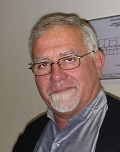Accueil > À la une > Death of Michel Barat
Death of Michel Barat
par - 4 décembre 2018 (modifié le 8 décembre 2018)

It is with great sadness and deep sorrow that we learnt of the passing of Michel Barat on November 28, 2018 at the age of 80.
Michel Barat played a prominent role in Physics and Chemistry at Orsay (Université Paris-Sud). He created his first research group on ion-atom collisions at the Institut d’Electronique Fondamentale in the mid-1960s. The growth of this research subject, and more widely the field of Electronic, Atomic and Molecular Collisions, led him with Jean Durup and Florence Fayard, to found the Laboratoire des Collisions Atomiques et Moléculaires (LCAM) in 1977. He was the director until 1989. The development of the LCAM owes much to his remarkable sense and intuition of physics, as well as his exceptional ability to recognize and encourage new talent, bringing together theorists and experimentalists within the laboratory.
The leitmotif of his research work has been the study of the collision mechanisms between atomic and molecular particles by measuring state-to-state differential cross sections using multi-coincidence and imaging techniques. He made a number of major contributions to the following subjects, in particular :
![]() Excitation and ionisation in atomic collisions. The development of the quasi-molecular model, and the design of the famous Fano-Lichten-Barat electron promotion model.
Excitation and ionisation in atomic collisions. The development of the quasi-molecular model, and the design of the famous Fano-Lichten-Barat electron promotion model.
![]() Simple and multiple-electron capture by multi-charged ions
Simple and multiple-electron capture by multi-charged ions
![]() Reactive collisions via excited electronic states
Reactive collisions via excited electronic states
![]() Fragmentation of molecules and clusters through the impulsive and electronic mechanisms.
Fragmentation of molecules and clusters through the impulsive and electronic mechanisms.
More recently, he had contributed to the close link between the LCAM and the Laboratoire de PhotoPhysique Moléculaire (LPPM), which was an important step towards the creation of the Institut des Sciences Moléculaires d’Orsay (ISMO). This was achieved in part by the joint participation in the « Arc en Ciel » project at the Centre de Cinétique Rapide ELYSE to study the fragmentation processes of complex molecules (including those of biological interest) by combining pump-probe and real-time imaging techniques.
His scientific success was due to his natural charisma to mobilize teams around him and thus generate impetus towards new subjects. As a researcher, he was endowed with great scientific curiosity and remarkable listening and communication skills. Gifted with an exceptional sense of physics and virtuosity as an experimental scientist, he has always been extraordinarily effective. A tireless researcher, he maintained a dynamism and enthusiasm that was exemplary to his peers and the younger generations.
Michel Barat has been instrumental in the emergence, structuring and maturing of Collision Physics at the national and international level. He worked pugnaciously to obtain the full recognition of this field within the CNRS (the French National Research Organisation). He has been a central figure in the organization of several national and international meetings in this field. After being a member of the Atomic, Molecular and Optical Physics division of the National Committee for Scientific Research from 1966 to 1975, his strong involvement in the scientific community led him to chair this Committee in the early 1990s. International recognition earned him the honour of being Chairman of the Atomic and Molecular division of the European Physical Society between 1989 and 1999.
We will not forget Michel’s scientific insight and culture, his infectious enthusiasm, nor his eclecticism, his good nature, and his humour.
We express our deepest condolences to his family and loved ones.
Dans la même rubrique :
- Une conversion biomimétique efficace du rayonnement solaire en hydrogène vert
- Détection des signatures spectrales de liaisons de structure de la glace d’eau interstellaire par le JWST
- Prix du meilleur poster à Jean-Xavier Bardaud
- Deux doctorants de l’équipe NanoBio récompensés
- Conférence annuelle du GDR Chirafun à l’ISMO : 19-20 sept
- Projet sur l’eau des étudiants de L3
- Des micelles théranostiques combinant l’imagerie TEP et la radiosensibilisation des cellules tumorales
- Une chercheuse de l’ISMO à Francfort dans le cadre de l’année de la physique
- “In the blink of an eye” , première place du concours France Bioimaging
- La nano-spectroscopie infrarouge révèle une partie des secrets de l’astéroïde Ryugu
- Prix de la meilleure présentation orale à Loïse Attal
- Caractériser les états excités d’atomes individuels grâce à la combinaison de la microscopie à effet tunnel et d’un laser impulsionnel
- MOOC de Paris Saclay : comprendre les nanosciences
- 3ème édition de la journée scientifique du FOrum de la Communauté Ultrarapide du plateau de Saclay
- Le télescope James Webb assiste en direct à la destruction d’un océan terrestre tous les mois
- Inauguration du laboratoire commun ISMO - Abbelight
- Jeudi de la recherche de Lou Barreau, jeudi 8 février à 18h
- L’art de mesurer la taille des grains interstellaires : ce que révèle JWST
- Chiralité induite sur une molécule achirale au synchrotron SOLEIL
- Webb cartographie la distribution de la glace dans un disque protoplanétaire.


